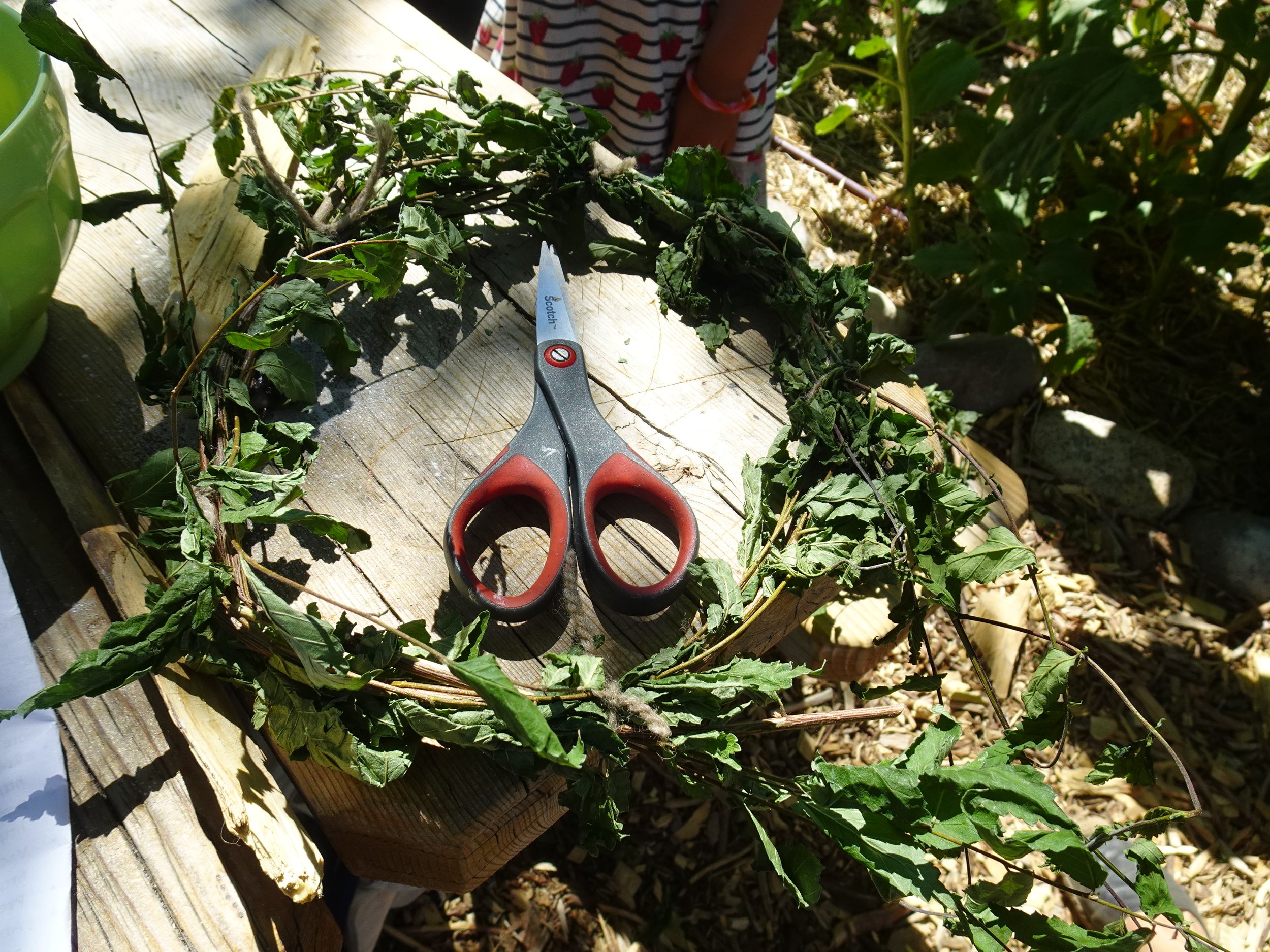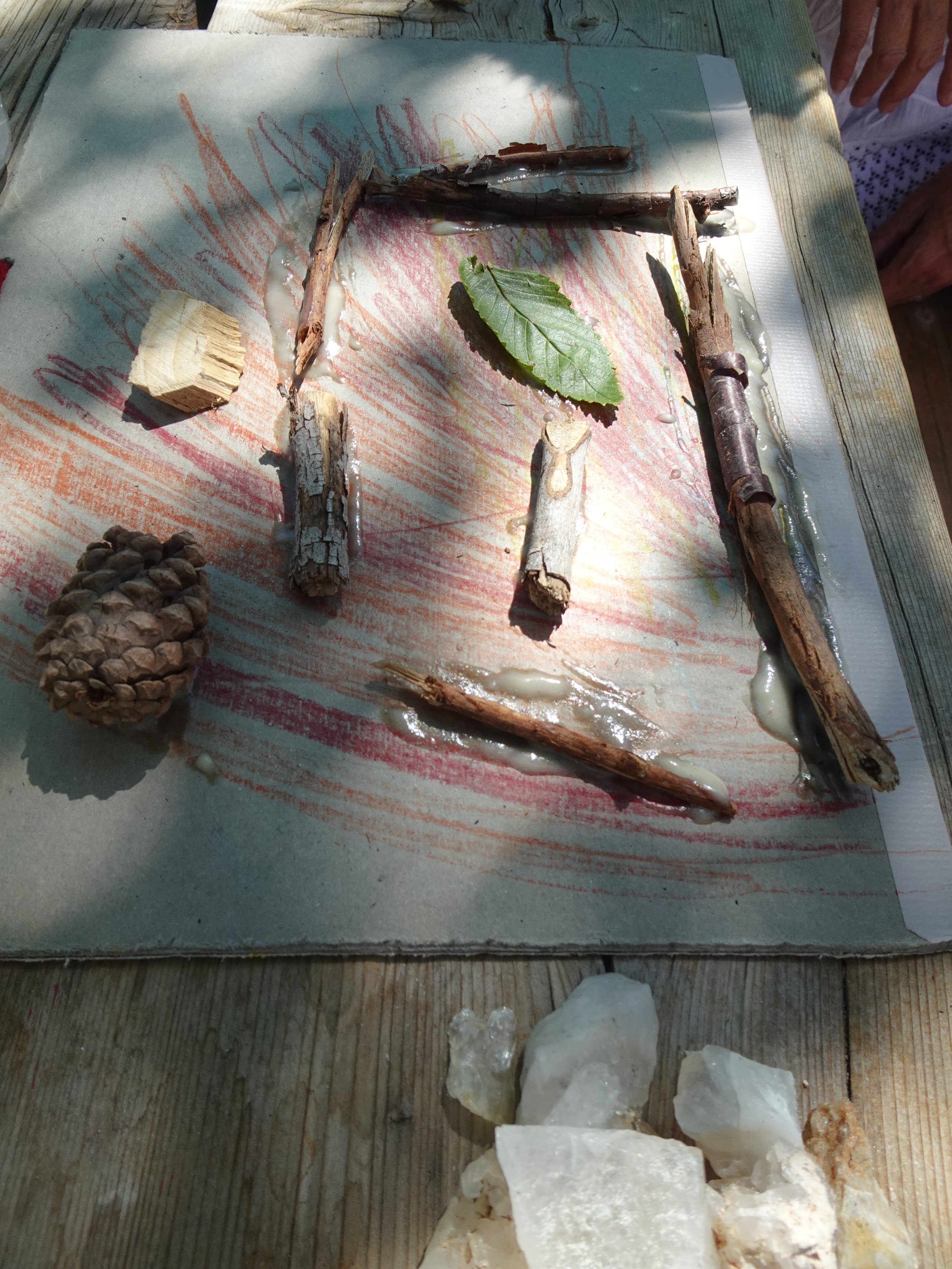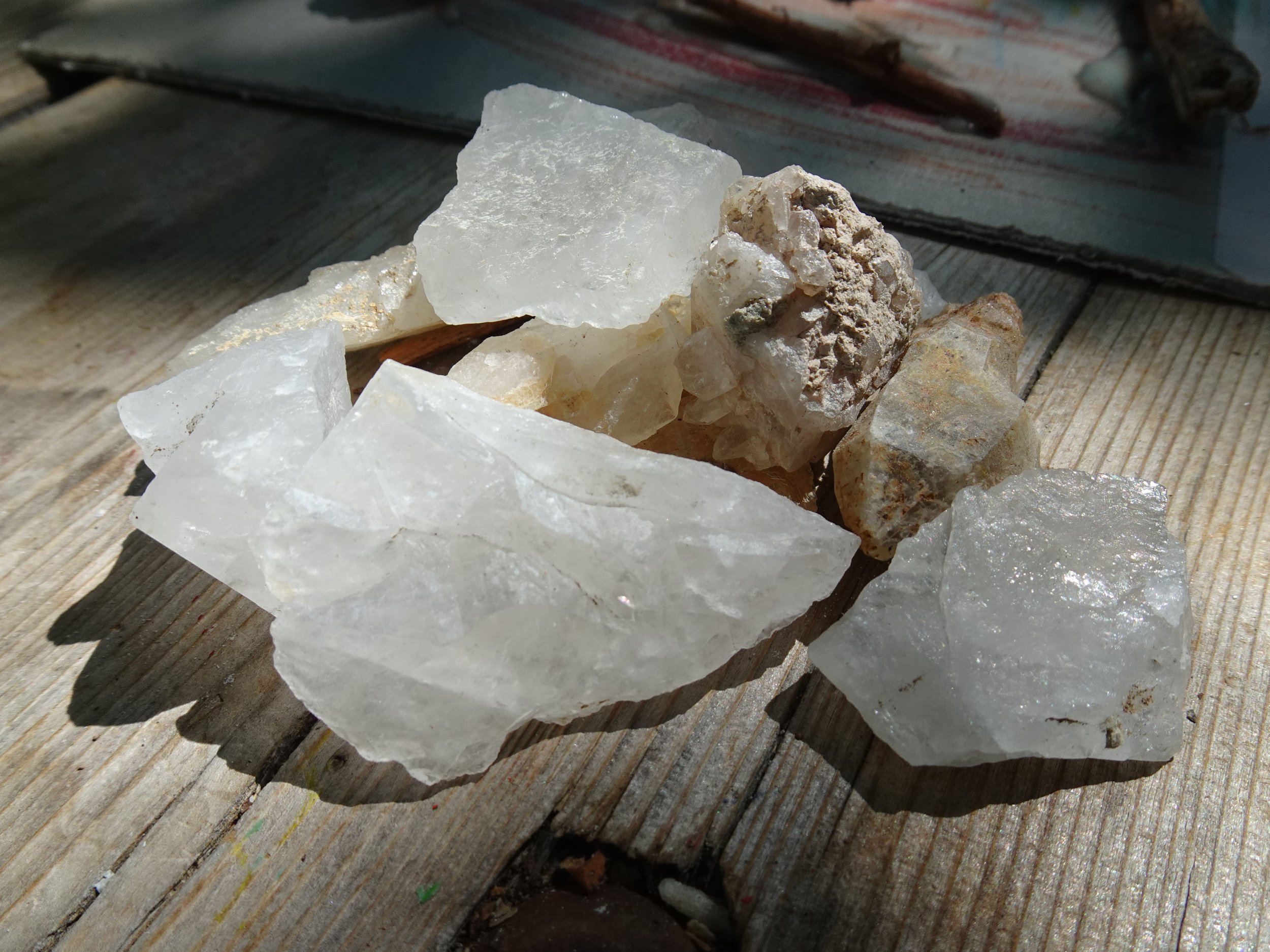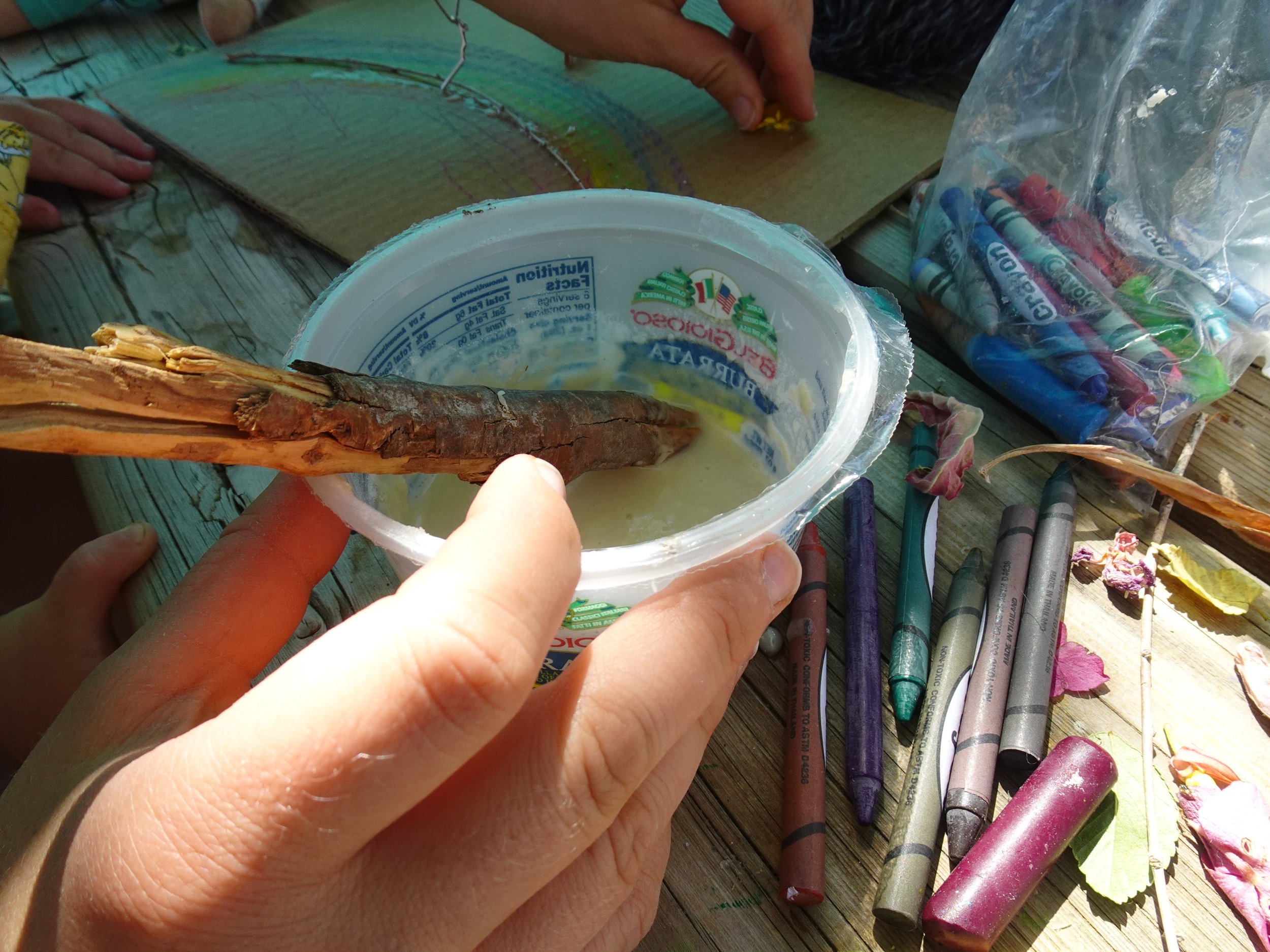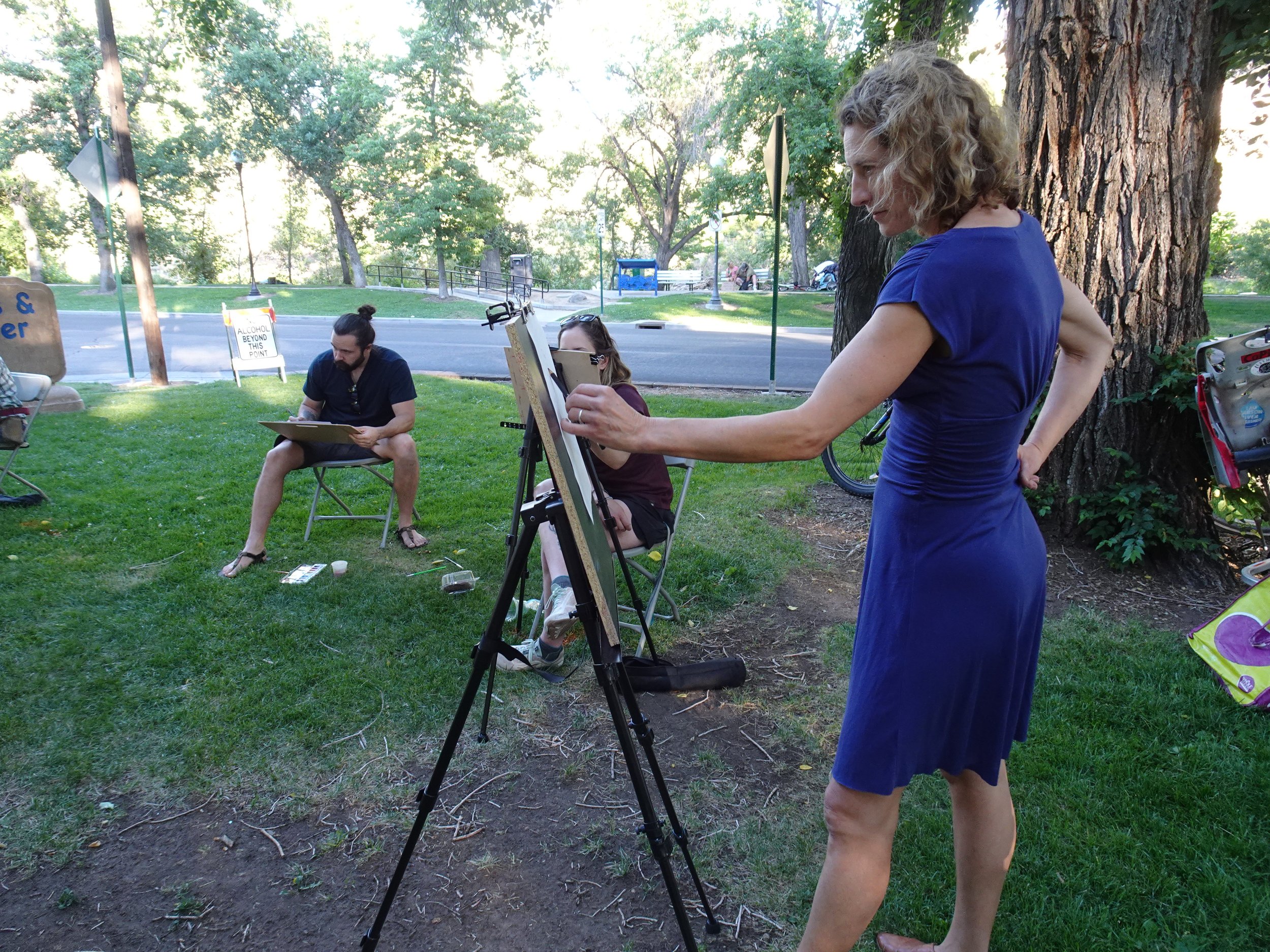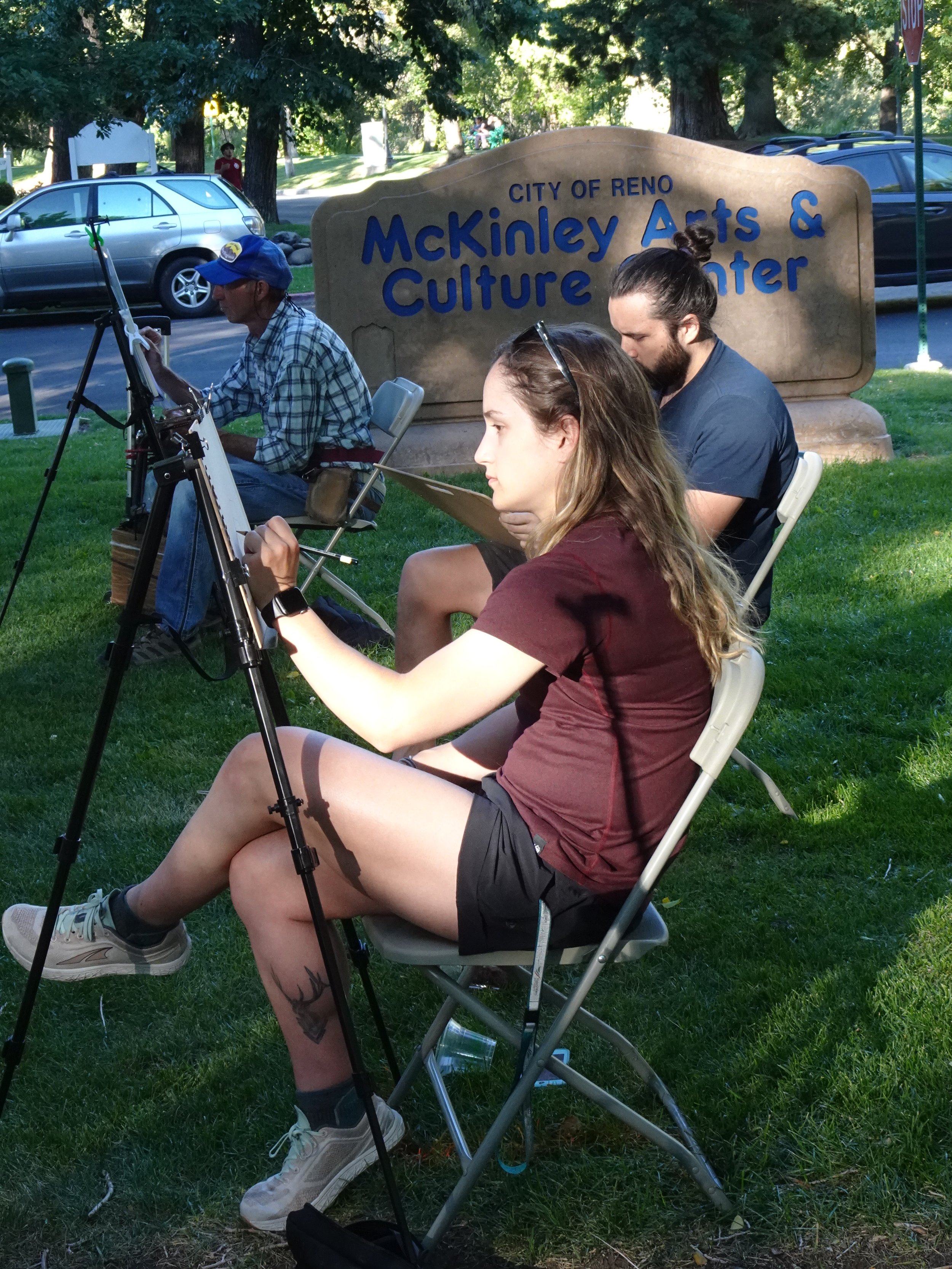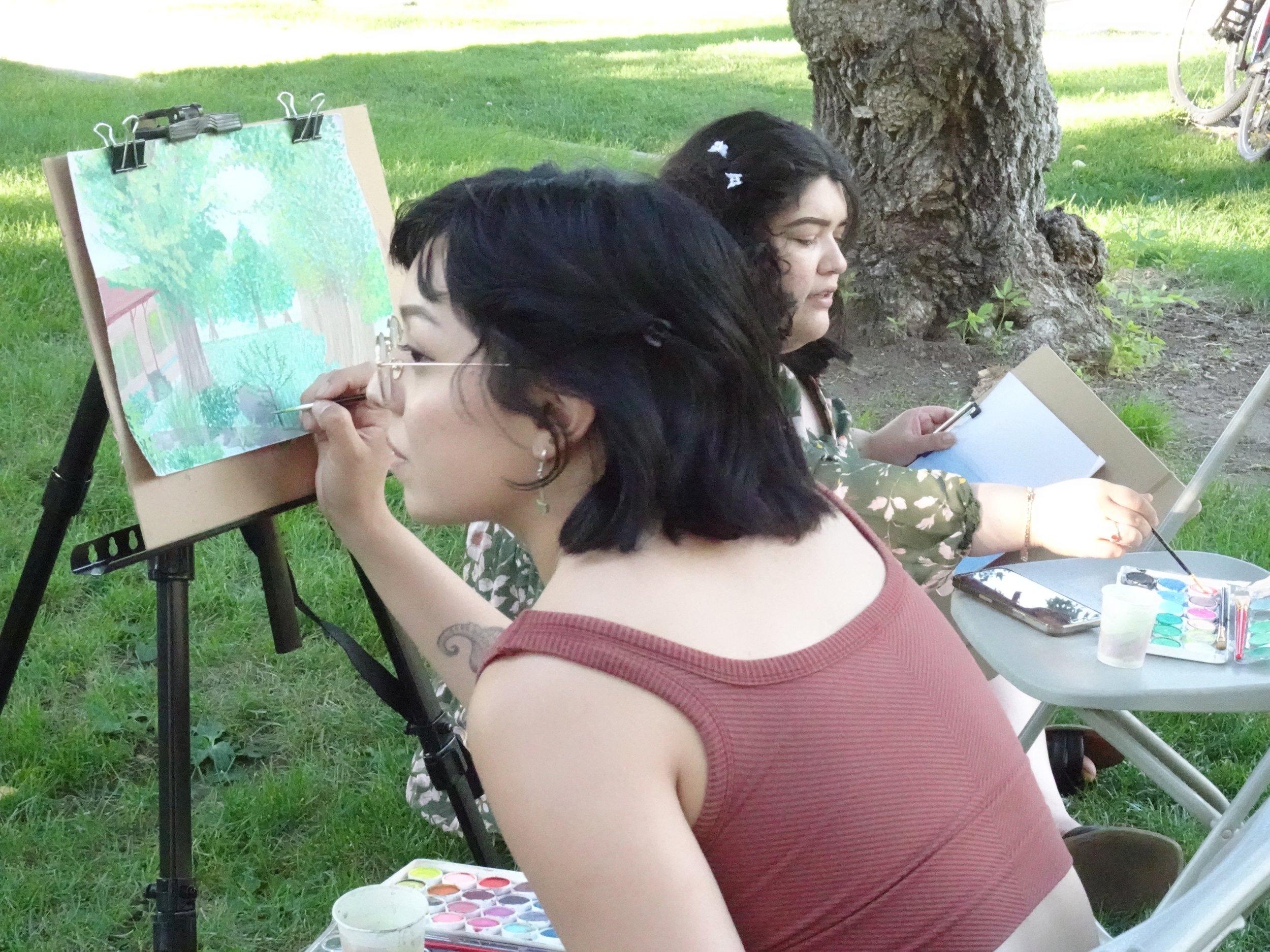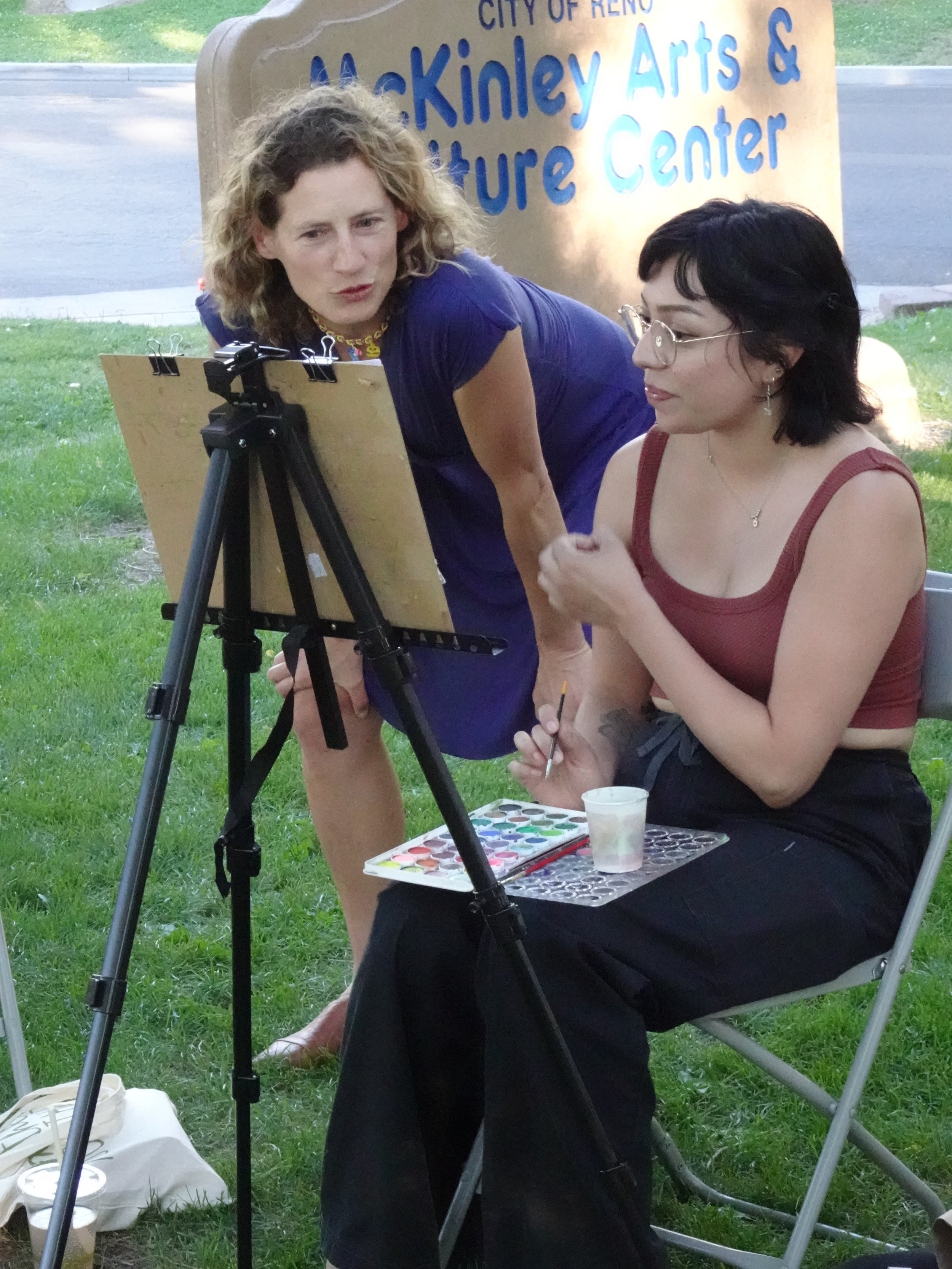On a recent summer day in the oasis of Katie’s Community garden on the Bridge Church compound, a group of kids and their moms worked on the finishing touches of their “eco-art,” blending different nature parts they collected into plate-sized collages.
Zoe Bray, an established portrait artist, anthropologist and journalist, and soon to be published children’s book author, gently guided along the process. She showed participants how to make glue from a flower, water and a bit of sugar. If she had more time, she said, she could have collected resin from trees to skip the sugar and go “completely natural.”
“You don't need all this artificial stuff, but you have the most amazing nature around you and get yourself familiarized with that, and learn to care about your environment in the process. And so I think that's empowering to both children and adults and very freeing too,” Bray said of the eco-art experience.
A few days earlier, Bray had a similar calm demeanor, coordinating free drawing and painting lessons at the Riverside Farmers’ Market, while her own two kids played nearby.
“I think it’s exciting and empowering to be involved in what's going on around you,” she told Our Town Reno this week from her tree-filled backyard, not far from the Truckee River. “Art is a wonderful way of getting people to connect with each other and their environment, and also to provide a kind of relaxing and meditative moment. And I think this is particularly important, in the kind of fast-paced, media saturated world we live in just to have this opportunity to work in peace and to be able to share this experience with others.”
Bray, a Franco-British artist, currently enjoying her second stay in Reno, says she’s looking for more grants to hold similar workshops. In June, she used a Creative Aging grant from the Nevada Arts Council to teach drawing and painting still-lives at Revel Rancharrah.
Previously, she’s held workshops in museums, to break the intimidation factor of such settings.
“If you haven't been immersed in that growing up, you don't quite know how to engage with it or look at it, or, you know, it might sound like a very elitist thing, art, but no, just make it approachable, accessible and get people involved and engaged,” she says of her engagement method.
Bray first came to Reno over ten years ago as an Assistant Professor at UNR with the Center for Basque Studies, linking the arts and anthropology departments. She then became a visiting professor at the Hebrew University of Jerusalem, before returning to the Biggest Little City.
“Reno really does provide an extraordinary quality of life,” Bray said of her return. “For me, this easy access to nature, to the wilderness is just so important, really valuable. And we are so fortunate to be able to have that here. I can just take my bike and in 10 minutes I can be further up the river, swim in the Truckee River. I can go for a hike and just, you know, completely disconnect from the stresses of urban life and just refuel myself and my soul. And that's just incomparable. It's just something that's just invaluable.”
She also appreciates local Basque connections, which she is herself on her mother’s side, and which has guided part of her artistic work with a series of portraits on Basque-Americans and her research in anthropology on Basque identity.
“My mother's grandfather was one of these immigrants from the French side of the Basque country. So this was in the early 19 hundreds, when the Basque country in France was one of these pretty poor regions, he had the opportunity to come to the American west,” Bray said of her heritage. “And at the time, the opportunity for Basque people then was to find employment as a sheepherder. So he was one of these that came to Nevada. He was somewhere between Eureka and Ely. And then he actually came back to the Basque country and settled back home. So he kind of paved the way for me to then come here in a very different and more privileged situation.”
“As a portrait painter, I paint in this kind of traditional way using oil paints that I make myself if possible in my own canvas. And I, I look for a long time at nature. So I ask people to pose for me for several, several hours, several days, so that I really can get to know them properly and also really observe them. And it's really on the basis of light, how light falls on your face,” Bray said, when asked about her series of portraits of Basque-Americans.
Bray also writes about local Basques for different media publications, including the French Basque newspaper Mediabask which recently ran her article about how the Great Basin Community Food Coop was founded by two grand-daughters of a sheepherder emigrated from a village close to hers.
A new children’s book she illustrated and wrote called Amatxi is about a girl who discovers strange sounds by the Truckee River with her Basque grandmother. Bray will be doing an artist’s residency in the Basque County in the fall and working on a second part to the book. She’s also been working on a series of illustrations of children interacting with the world around them, from making their own compost to climbing trees, and running free, much like her own kids often do here, where Bray will return.
Another project she’s pursuing is trying to get eco-art incorporated into local school curriculums.
“It’s even more urgent in really urban settings where some children just have never been anywhere, but a small city park. Every school should be able to have some kind of garden, some natural setting where they can just hang out, that's not always just tarmac and metal and cement,” Bray said.
Bray cofounded Reusable Reno with Lakshmi Albright to get local businesses “to make the shift from single-use foodware to reusable foodware, in order to address the serious problem of trash and microplastics increasingly present in our watershed and environment in general. My work giving lessons in eco-art is connected to my activism with Reusable Reno, showing people how you can easily make this beneficial transition from a single-use and disposable lifestyle to a more sustainable - and economical - one by going 'reuse' with so many simple acts (like making glue from organic things rather than buying glue in a plastic bottle!),” Bray wrote to us in an email after our interview.
In Reno, in addition to trying to help limit trash (see above), she’s also worried about expanding sprawl and the lack of accessible housing. “If you don't have a certain income level, just to be able to go anywhere, to be able to, to live with basic standards is really challenging. So he city has come to this point where it really needs to work this out and give [opportunities] to people of lower income without having to cover huge distances to go to work or to do anything. And this for the sake of equity, but also for the sake of the amazing nature that we have around us. We're lucky to have so much public land and this needs to be preserved. We can't be solely crawling up the mountains and now to the desert, just so that we can have our comfortable house with a front yard and a backyard. We need to rethink that for the good of everybody.”
Being an artist here can be challenging, though, whatever its rewards. “It’s not going to make you comfortable or rich,” she concluded. “So that's why it's important to have something else going on the side.”

